#the student of prague (1913)
Explore tagged Tumblr posts
Text
The Student of Prague is just The Devil Went Down to Georgia but for Europeans.
#the student of prague#the student of prague 1913#the student of prague 1926#conrad veidt#silent film#silent era#the devil went down to georgia#german expressionism#paul wegener
8 notes
·
View notes
Text
Freaky Facts: Der Student von Prag (1913)

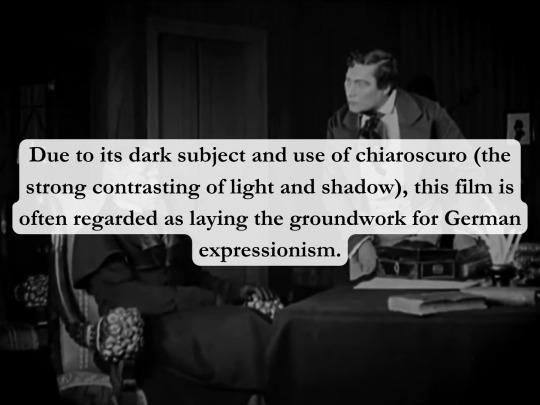
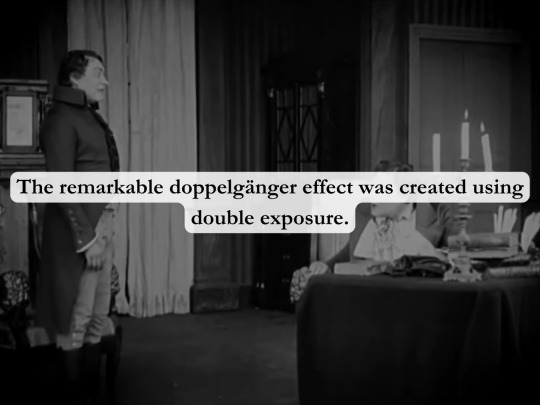
(My Review) (My Screenshots)
#Der Student von Prag (1913)#Der Student von Prag#The Student of Prague (1913)#The Student of Prague#Freaky Facts
32 notes
·
View notes
Text
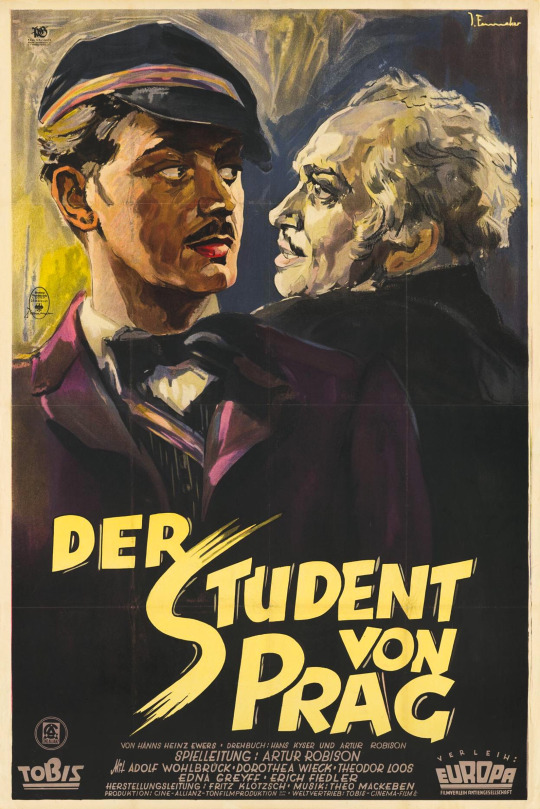
Der Student von Prag (1913)
AKA The Student of Prague; A Bargain with Satan
#der student von prag#the student of prague#paul wegner#grete berger#lyda salmonova#john gottow#1910s horror#1910s movies#1913#hanns heinz ewers#alfred de musset#horror movie poster
25 notes
·
View notes
Text
blood red sandman (2008) a 4 minute video is far more scarier than any movie produced by paul wegener. you can’t change my mind.
0 notes
Text
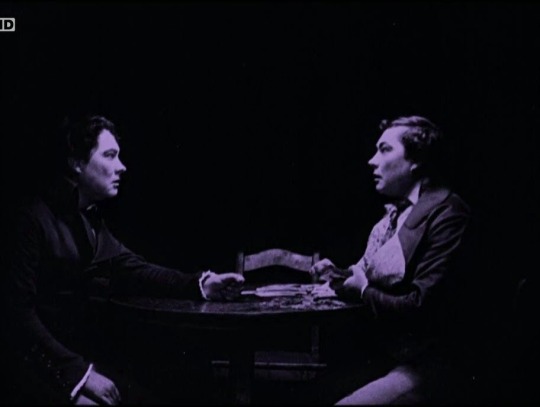

The Student of Prague (1913) | Screenshot from me playing Team Fortress 2 at 12:30 AM (2023)
35 notes
·
View notes
Text
just got back from my German film class screening of student of Prague 1913 i am so gustav sebald coded guys (delusional)
5 notes
·
View notes
Text

Conrad Veidt- the STUDENT OF PRAGUE (1926)
A movie about a doppleganger.
Paul Wegener essayed the role in 1913.
9 notes
·
View notes
Photo


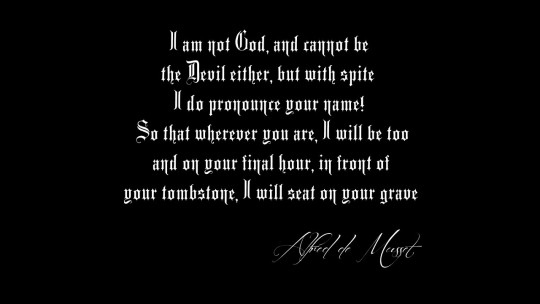
The Student of Prague, Stellan Rye (1913)
#the student of prague#stellan rye#paul wegener#alfred de musset#movies#literature#my stuff#that scene was beautifully shot
13 notes
·
View notes
Note
saw you mention the student of prague and am thinking of watching it. would you recommend the 1913 or 1926 version, or a later one?
1926 is the one w conrad veidt, and the only one I’ve seen lol
5 notes
·
View notes
Text
























Spooky Season 2024 Movies, Ranked and Rated
The Uninvited (Lewis Allen, 1944) - 5/5
I Married a Witch (Rene Clair, 1942) - 5
Shadow of the Vampire (E. Elias Merhige, 2000) - 5
The Haunted House (Edward F. Kline and Buster Keaton, 1921) - 5
Warning Shadows (Arthur Robison, 1923) - 5
The Student of Prague (Henrik Galeen, 1926) - 4.5
The Golem: How He Came Into the World (Paul Wegener and Carl Boese, 1920) - 4.5
Woman of the Hour (Anna Kendrick, 2024) - 4.5
The Fall of the House of Usher (Jean Epstein, 1928) - 4.5
The Magician (Rex Ingram, 1926) - 4.5
The Hands of Orlac (Robert Wiene, 1924) - 4
Eerie Tales (Richard Oswald, 1919) - 4
A Page of Madness (Teinosuke Kinugasa, 1926) - 4
Waxworks (Paul Leni and Leo Birinski, 1924), 4
The Substance (Coralie Fargeat, 2024) - 4
The Student of Prague (Hanns Heinz Ewers and Stellan Rye, 1913) - 4
Sweet Darling (JT Mollner, 2024) - 4
The 13th Hour (Chester M. Franklin, 1927) - 3.5
Dead Whisper (Conor Soucy, 2024) - 3.5
Fear (Robert Wiene, 1917) - 3.5
After Death (Yvgeni Bauer, 1915) - 3
The Eyes of the Mummy (Ernst Lubitch, 1918) - 3
Salem's Lot (Gary Dauberman, 2024) - 2.5
A Deal with the Devil (Holger-Madsen, 1914) - 2.5
#spooky season#spooky season 2024#horror films#silent horror#lists#my movie and tv stuff#classic film#silent film
1 note
·
View note
Text
Dread by the Decade: Der Student von Prag
👻 You can support me on Ko-fi ❤️

★★★★
Plot: When a poor student falls in love with a countess, he makes a deal for gold with a shady stranger.
Review: Though it tells a familiar morality tale, the film is elevated by engaging leads, impressive effects, and a provocative ending.

English Title: The Student of Prague Source Material: Faust by Johann Wolfgang von Goethe, "William Wilson" by Edgar Allan Poe, and “The December Night” by W.S. Merwin Year: 1913 Genre: Occult, Gothic Country: German Empire Language: Silent Runtime: 1 hour 25 minutes

Director: Stellan Rye Writer: Hanns Heinz Ewers Cinematographer: Guido Seeber Composer: Josef Weiss Cast: Paul Wegener, John Gottowt, Grete Berger, Lyda Salmonova, Lothar Körner

------
Story: 4/5 - While not the most unique, its solid pacing and sympathetic characters prevent it from feeling stale.
Performances: 4/5 - Wegener and Berger are great as lovesick people trapped by their stations in life, and Gottowt’s Scapinelli is a wonderful mix of hammy and sinister.

Cinematography: 4/5 - Well-framed and varied shots with solid lighting. The use of shadow during Balduin’s card game stands out.
Editing: 3/5
Music: 2.5 - Not memorable.
Effects: 4/5 - The effects and editing used to create the doppelgänger effect are near seamless.
Sets: 3/5 - Prague’s architecture should have been featured more, but the sets are still realistic.
Costumes and Make-Up: 4/5 - High quality and mostly period appropriate. Scapinelli’s make-up and beard are fun.
youtube
Trigger Warnings:
Incest (the countess is betrothed against her will to her cousin)
#Der Student von Prag (1913)#Der Student von Prag#The Student of Prague (1913)#The Student of Prague#Stellan Rye#supernatural horror#occult#Dread by the Decade#review#1910s#★★★★
9 notes
·
View notes
Video
youtube
The Student of Prague (1913) Stellan Rye & Paul Wegener
The Student of Prague (Der Student von Prag) is a 1913 German silent film by Stellan Rye and Paul Wegener . It is considered as a precursor film of the expressionist movement that will characterize German Cinema in the 1920s.
Release date August 22, 1913
0 notes
Text
omg i havent done one of these in so longggg ty for the tag
last song: gay messiah, rufus wainwright
favorite color: i love foresty greens but i also just adore rich warm browns and sepias. lotsa siennas and rich umbers and the like
last movie: student of prague 1913 but that was for class, other than that my last one was rope 1948 (so normal so so soooo normal)
sweet/spicy/savory: i am a sweets enjoyer
relationship status: i have a partner ish of the platonic sort ! but i am not involved in any romantic things no
current obsession: i'm getting back into snicket if it's not obvious considering i'm active again buttt i also really love rope 1948 and raconteurs. and my own personal ttrpg game world and characters
tagging: uhhhh anyone who wants to!! sorry most people i would normally tag have already been tagged haha
nine people i want to get to know better

Thank you for the tag, @slutsons-blog! Starting a new post because I'm autistic and therefore mostly only care about the "Current Obsession" question, and want to ramble excessively as usual in that one.
Last song: Pokemon Mystery Dungeon Red Rescue Team: Pokemon Square because I'm currently playing Pokemon Mystery Dungeon with my daughter. Otherwise I honestly couldn't tell you. Whatever was on in my car.
Fave color: Purple
Currently watching: Star Trek Discovery
Last movie: Knives Out
Sweet/spicy/savory: Sweet, tart, salty
Relationship: married x 27 years
Last thing I googled: the word "dependent", for spelling assistance. which is a good thing because I spelled it "dependant".
Current Obsession: it's been spn since 2016. Truly we are the Hotel California of media franchises. I did recently play Disco Elysium twice in a row in quick succession, and I follow the DE tag. I can't recommend the game highly enough.... but I can feel my Special Interest-level obsession with it fading already. Spn has never faded even a tiny bit and I wonder if it ever will.
@slutsons-blog I feel after reading that you're watching spn for the first time, that I did you a bit of a disservice with my Sam takes to you before in that I mostly talked about Sam's evolution as a character as the show goes on and very little about him from the first five seasons.
Gotta be honest and tell you that although I liked both brothers all along, I was a Dean girl until the end of s6/beginning of s7, when the balance of who gets whumped the most started shifting and my subconscious suddenly decided to switch allegiances. It's not that I liked Dean any less; my id just loves a sopping wet pathetic kitten of a man who has been sexually abused, and Sam got suddenly way more kitteny and pathetic after the Cage. So I don't actually have a ton of takes on "what to love about Sam in the early seasons". I do love early seasons Sam too--she is my beautiful baby princess--but my early seasons takes are a lot more inchoate.
I count myself lucky about my id's sudden defection though, because I think we have limited control of who our blorbos are, and having Dean as a blorbo is a tough row to hoe as the later seasons go along. You know how you noticed that in s6, Dean suddenly gets a lot more assholey without apparent reason? Unfortunately he never gets better again, and in fact keeps getting worse and worse as the years go by, until by the last seasons he is openly far more abusive to their joint child(-in-an-adult body) than John was to him and Sam. It's a realistic picture of what can happen when trauma keeps piling up on people, but it's also honestly pretty distressing, especially if he's your blorbo.
If one is in it for the ship, there's some good destiel content in the later seasons, but if you're in it for Dean, you're left either 1) dealing with the fact he's got extremely significant interpersonal problems that he never gets much of anywhere on solving and that negatively impact his chosen family in profound ways, or 2) pretending he's the same character he was in s1 and Sam is the same Sam from s1, only more boring, and Dean is just trying to put up with him because he was brainwashed by John (or ig 3- something in the middle between those two. But that seldom seems to happen in practice for whatever reason). These two versions of the show are poorly compatible, and that's how the Sam girls and the Dean girls end up in isolated silos. A few people manage to live in both, but not many.
Anyway, I feel like without the context of how Sam and Dean change in the mid to late seasons, the two fics I recc'd as Sam character studies are going to seem insanely Dean-critical, so if you haven't read them yet, you might want to wait until s10. In the meantime, the general recs are fun reads and hopefully do a good job of showcasing both characters earlier on.
Tagging (but I would be a huge hypocrite if I didn't specify there's no pressure to respond, since I almost always fail at responding to tag games myself): @adihildilid @aliusfrater @quietwingsinthesky @sammygender @ardentpoop
@peanutbutterandbananasandwichs @schizosamwincester @normalbrothershow @jellybracelet.
202 notes
·
View notes
Text
“Obviously the double is nothing more than a projection of one of the two souls inhabiting Baldwin. The greedy self that makes him succumb to devilish temptations assumes a life of its own and sets out to destroy the other and better self he has betrayed. At the end the desperate student shoots his reflection in the same attic from which he once emerged. The shot fired at the apparition kills only himself.”
— Siegfried Kracauer, From Caligari to Hitler: A Psychological History of the German Film
19 notes
·
View notes
Text
“A decade before Walt Disney Productions came into existence, making its name synonymous with animated films, there was another pioneer of the art form — Lotte Reiniger.

Reiniger’s filmmaking career spanned 60 years, during which she created more than 70 silhouette animation films, including versions of “Cinderella,” “Puss in Boots” and “Hansel and Gretel.” She’s perhaps best known for her 1926 silent film “The Adventures of Prince Achmed,” a fantastical adaptation of “The Arabian Nights” that was among the first full-length animated features ever made.
Charlotte Reiniger was born on June 2, 1899, in the Charlottenburg district of Berlin to Karl and Eleanor (Raquette) Reiniger. She studied at the Charlottenburger Waldschule, where she learned about scherenschnitte, the art of cutting shapes and designs in paper with scissors. The art form originated in China and later became popular in Germany.
Reiniger cut silhouettes of people, including her family members. “I began to use my silhouettes for my playacting, constructing a little shadow theater in which to stage Shakespeare,” she wrote in 1936 in Sight and Sound magazine.
At first she wanted to be an actress, but that ambition changed when, as a teenager, she encountered the film director and actor Paul Wegener after a lecture he had delivered in Berlin on the possibilities of animation in cinema. Fascinated by his films, like “The Student of Prague” (1913) and “The Golem” (1915), she persuaded her parents to enroll her in a theater group at the Max Reinhardt School of Acting, where Wegener taught.
For fun she cut silhouettes of the actors in the group. Wegener was impressed. He soon enlisted her to help with his 1918 film, “The Pied Piper of Hamelin,” an adaptation of the folk legend about a man who is hired to play his magic flute to lure away rats from a German town. When the town refuses to pay him for his services, the piper plays another tune to hypnotize the children and lead them out of the town, never to be seen again. Wegener had Reiniger help him animate wooden puppet rats for the film.

“I now had one desire — to make films,” she wrote. Her work with Wegener led to her admission to the Institute of Cultural Research in Berlin, where she met the art historian Carl Koch. He would become her husband and a collaborator on her films.
Their first animated short was “The Ornament of the Heart in Love” (1919), about two lovers, both ballet dancers, and a morphing ornament between them that represents their emotions.
The expressive qualities of her work caught the attention of a patron, the banker Louis Hagen, who owned a film company and was looking to invest in new talent. Hagen invited her and her team of producers and designers to use his studio in Potsdam, Germany, where they worked on “Prince Achmed,” their first feature-length film.
Music, perhaps counterintuitively, was vital to the silent film, and the team worked early on with the composer Wolfgang Zeller, who made sound effects with flute notes and a glockenspiel. The team then filmed their scenes to the music, the notes driving the action and punctuating it with emotion.
Reiniger’s editing was meticulous. Starting with more than 250,000 frames, she and her crew used just over 100,000 in the film, which ran for an hour and 21 minutes, each second requiring 24 frames. It took three years to complete, and premiered in the Volksbühne, or People’s Theater, in Berlin, when Reiniger was 27.
The film showcased the fantastical potential of animation. A prince defeated an army of demons to win over a princess. Birds battled witches and sorcerers. Horses flew. The French film director Jean Renoir saw “Prince Achmed” on its opening night in Paris, and later recalled that he wanted to tell her, “You have fairy hands.”

Reiniger designed a complex process to make her films. She cut each limb of each figure out of black cardboard and thin lead, then joined them together with wire hinges. For research, she spent hours at the Zoo Berlin, watching how the animals moved.
Beginning with “Prince Achmed,” she also created an early version of the multiplane camera, which gave two-dimensional animation a hitherto unexplored depth, movement and complexity. She called her device a tricktisch, or trick table.
Reiniger described her process this way: “Figures and backgrounds are laid out on a glass table. A strong light from underneath makes the wire hinges disappear and throws up the black figures in relief. The camera hangs above this table, looking down at the picture arranged below.”
After taking a photograph, Reiniger and her team moved the figures into their next position and photographed the scene again. “The important thing,” she wrote, “is to know how much to move the figures so that a lifelike effect may be obtained.”
In reviewing her “Cinderella” for The New York Times in 1928, Charles Morgan wrote, “The small black shapes laugh at you from a world of their own into which naturalism makes no laborious entry!”
When Hitler was in power, Reiniger and her husband left Germany for France, Italy and England, where they collaborated with other puppeteers, funders and artists before returning to Berlin in 1944 to look after Reiniger’s mother. In 1948 they moved to London, where they joined a nearby artists’ colony. Reiniger then directed a series of short children’s films for the BBC.
Her husband died in 1963, and she stopped making films. But in 1972 she was recognized with the Golden Reel Award at the Berlin Film Festival for her contributions to German cinema. Two years later, the Goethe Institute sponsored her on a lecture tour of Canada and the United States.
“A Reiniger revival swept North America,” the Canadian newspaper The Globe and Mail wrote. The tour inspired her to make a few final short films, including “The Rose and the Ring” (1979), a 24-minute adaptation of the 1854 satirical work of fiction by William Makepeace Thackeray, and “Düsselchen and the Four Seasons,” a two-minute film completed in 1980. She died on June 19, 1981, in Dettenhausen, Germany. She was 82.
Though The New York Times did not take note of her death at the time, the Times film critic A.O. Scott recalled her in a 2018 article about the unsung women who had advanced the art of filmmaking. Praising Reiniger’s “blend of whimsy and spookiness,” Mr. Scott wrote that her “dreamy images that seem to tap right into the collective unconscious suggest both an antidote to Disney and a precursor to Tim Burton.””
- Devi Lockwood, “Overlooked No More: Lotte Reiniger, Animator Who Created Magic With Scissors and Paper.”
70 notes
·
View notes